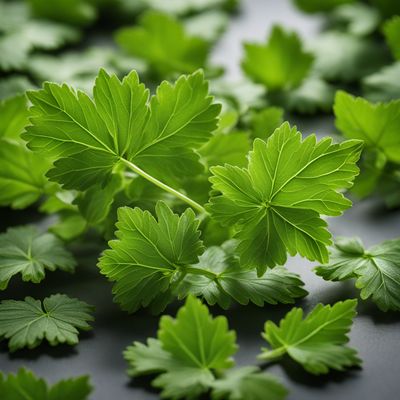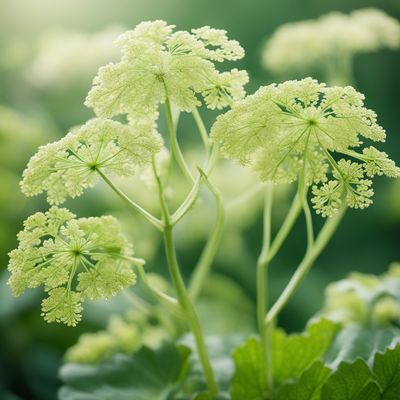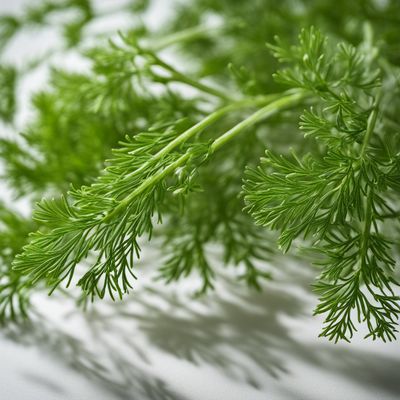
Ingredient
Herb of grace
The Divine Herb: Unveiling the Secrets of Herb of Grace
Herb of Grace is a perennial herb with bluish-green leaves and small yellow flowers. It has a strong, pungent aroma and a bitter, citrusy taste. The leaves are deeply divided and emit a pleasant fragrance when crushed. The herb is known for its medicinal properties and is often used in traditional herbal remedies.
Origins and history
Herb of Grace has a long history dating back to ancient times. It is believed to have originated in the Mediterranean region and was highly valued by the ancient Greeks and Romans. It was used for its medicinal properties and was considered a sacred herb associated with various deities. Over time, it spread to other parts of Europe and was introduced to the Americas by European settlers.
Nutritional information
Herb of Grace is a good source of vitamins A, C, and E, as well as minerals like calcium and iron. It is low in calories and fat, making it a healthy addition to dishes.
Allergens
Some individuals may be allergic to Herb of Grace, particularly those with sensitivities to plants in the Rutaceae family. It is advisable to exercise caution and consult a healthcare professional if you have any known allergies.
How to select
When selecting Herb of Grace, look for fresh, vibrant leaves that are free from blemishes or discoloration. Avoid wilted or yellowing leaves, as they indicate poor quality. The leaves should have a strong aroma when gently crushed.
Storage recommendations
To maintain the freshness of Herb of Grace, store it in a plastic bag or airtight container in the refrigerator. It can last for up to a week when stored properly. Alternatively, you can also freeze the leaves by blanching them briefly in boiling water, drying them thoroughly, and storing them in a freezer-safe container.
How to produce
Herb of Grace can be easily grown in a sunny spot in your garden or in containers. It prefers well-drained soil and regular watering. Start from seeds or purchase young plants from a nursery. Remember to prune the plant regularly to encourage bushier growth.
Preparation tips
Herb of Grace is a versatile herb that can be used in various culinary preparations. It pairs well with fish, poultry, and vegetables. Add it to marinades, dressings, or sauces to enhance the flavor. However, use it sparingly as its strong taste can easily overpower other ingredients. Remember to remove the tough central vein before using the leaves in recipes.
Substitutions
If Herb of Grace is not available, you can substitute it with a combination of other herbs such as thyme, rosemary, and sage to achieve a similar flavor profile.
Culinary uses
Herb of Grace is commonly used in Mediterranean and Middle Eastern cuisines. It is often added to soups, stews, and roasted meats to impart a distinctive flavor. It can also be used to infuse oils or vinegars, or as a garnish for salads and cocktails.
Availability
Herb of Grace is commonly available in Mediterranean countries, such as Spain, Italy, and Greece. It can also be found in specialty stores or online.
More ingredients from this category » Browse all

Lovage leaves
The Herbaceous Elixir

Celery leaves
The Unsung Heroes: Exploring the Versatility of Celery Leaves

Pimpernel
The Scarlet Beauty: Pimpernel's Vibrant Flavors

Sorrel
The Tangy Herb: Unveiling the Secrets of Sorrel

Angelica (leaves and stems)
The Heavenly Herb

Coriander leaves
The Vibrant Herb: Unveiling the Magic of Coriander Leaves

Fennel leaves
The Fragrant Herb: Unveiling the Delights of Fennel Leaves

Dill leaves
The Delightful Herb: Dill Leaves

Salad burnet
The Refreshing Herb

Burnet
The Herb of Coolness

Caraway leaves
The Aromatic Herb: Unveiling the Secrets of Caraway Leaves

Fenugreek leaves
Aromatic Herbaceous Delight